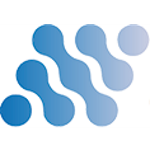
We could not find any results for:
Make sure your spelling is correct or try broadening your search.

| Strike | Bid Price | Ask Price | Last Price | Midpoint | Change | Change % | Volume | OPEN INT | Last Trade |
|---|---|---|---|---|---|---|---|---|---|
| 2.00 | 6.60 | 7.50 | 0.00 | 7.05 | 0.00 | 0.00 % | 0 | 0 | - |
| 3.00 | 5.60 | 7.30 | 0.00 | 6.45 | 0.00 | 0.00 % | 0 | 0 | - |
| 4.00 | 4.70 | 5.30 | 0.00 | 5.00 | 0.00 | 0.00 % | 0 | 0 | - |
| 5.00 | 3.60 | 4.90 | 3.38 | 4.25 | 0.00 | 0.00 % | 0 | 20 | - |
| 6.00 | 2.60 | 3.30 | 2.15 | 2.95 | 0.00 | 0.00 % | 0 | 1 | - |
| 7.00 | 1.10 | 2.50 | 2.18 | 1.80 | 0.00 | 0.00 % | 0 | 2 | - |
| 8.00 | 1.15 | 1.60 | 0.80 | 1.375 | -0.03 | -3.61 % | 11 | 111 | 09:53:40 |
| 9.00 | 0.50 | 0.65 | 0.60 | 0.575 | 0.20 | 50.00 % | 191 | 857 | 14:58:22 |
| 10.00 | 0.20 | 0.35 | 0.25 | 0.275 | 0.08 | 47.06 % | 351 | 704 | 14:37:50 |
| 11.00 | 0.10 | 0.15 | 0.10 | 0.125 | 0.01 | 11.11 % | 66 | 246 | 14:34:14 |
| 12.00 | 0.05 | 0.10 | 0.08 | 0.075 | 0.03 | 60.00 % | 87 | 442 | 11:43:13 |
| 13.00 | 0.05 | 0.10 | 0.02 | 0.075 | -0.03 | -60.00 % | 2 | 138 | 11:44:10 |
| 14.00 | 0.05 | 0.20 | 0.05 | 0.125 | 0.00 | 0.00 % | 0 | 404 | - |
| 15.00 | 0.10 | 0.55 | 0.10 | 0.325 | 0.00 | 0.00 % | 0 | 30 | - |
| 16.00 | 0.18 | 0.10 | 0.18 | 0.14 | 0.00 | 0.00 % | 0 | 101 | - |
| 17.00 | 0.05 | 0.75 | 0.05 | 0.40 | 0.00 | 0.00 % | 0 | 299 | - |
| Strike | Bid Price | Ask Price | Last Price | Midpoint | Change | Change % | Volume | OPEN INT | Last Trade |
|---|---|---|---|---|---|---|---|---|---|
| 2.00 | 0.00 | 0.50 | 0.00 | 0.00 | 0.00 | 0.00 % | 0 | 0 | - |
| 3.00 | 0.00 | 0.50 | 0.00 | 0.00 | 0.00 | 0.00 % | 0 | 0 | - |
| 4.00 | 0.05 | 0.50 | 0.05 | 0.275 | 0.00 | 0.00 % | 0 | 10 | - |
| 5.00 | 0.05 | 0.50 | 0.05 | 0.275 | 0.00 | 0.00 % | 0 | 20 | - |
| 6.00 | 0.05 | 0.05 | 0.05 | 0.05 | 0.00 | 0.00 % | 0 | 101 | - |
| 7.00 | 0.05 | 0.30 | 0.15 | 0.175 | 0.00 | 0.00 % | 0 | 576 | - |
| 8.00 | 0.10 | 0.35 | 0.25 | 0.225 | -0.02 | -7.41 % | 17 | 584 | 10:02:31 |
| 9.00 | 0.40 | 0.70 | 0.62 | 0.55 | -0.28 | -31.11 % | 13 | 127 | 13:42:43 |
| 10.00 | 0.10 | 1.65 | 1.46 | 0.875 | 0.00 | 0.00 % | 0 | 7 | - |
| 11.00 | 1.85 | 2.60 | 3.00 | 2.225 | 0.00 | 0.00 % | 0 | 5 | - |
| 12.00 | 2.65 | 3.50 | 4.00 | 3.075 | 0.00 | 0.00 % | 0 | 20 | - |
| 13.00 | 3.60 | 4.40 | 0.00 | 4.00 | 0.00 | 0.00 % | 0 | 0 | - |
| 14.00 | 4.60 | 6.00 | 0.00 | 5.30 | 0.00 | 0.00 % | 0 | 0 | - |
| 15.00 | 5.60 | 6.40 | 0.00 | 6.00 | 0.00 | 0.00 % | 0 | 0 | - |
| 16.00 | 6.70 | 7.40 | 0.00 | 7.05 | 0.00 | 0.00 % | 0 | 0 | - |
| 17.00 | 7.60 | 9.60 | 0.00 | 8.60 | 0.00 | 0.00 % | 0 | 0 | - |
 georgejjl
13 minutes ago
georgejjl
13 minutes ago
 mauismart
18 minutes ago
mauismart
18 minutes ago
 mauismart
21 minutes ago
mauismart
21 minutes ago
 mauismart
29 minutes ago
mauismart
29 minutes ago
 boi568
1 hour ago
boi568
1 hour ago
 falconer66a
2 hours ago
falconer66a
2 hours ago
 baltimorebullet
2 hours ago
baltimorebullet
2 hours ago
 rx7171
2 hours ago
rx7171
2 hours ago
 Hoskuld
3 hours ago
Hoskuld
3 hours ago
 boi568
3 hours ago
boi568
3 hours ago
 falconer66a
3 hours ago
falconer66a
3 hours ago
 boi568
3 hours ago
boi568
3 hours ago
 mike_dotcom
3 hours ago
mike_dotcom
3 hours ago
 kund
3 hours ago
kund
3 hours ago
 Hoskuld
3 hours ago
Hoskuld
3 hours ago
 boi568
3 hours ago
boi568
3 hours ago
 Hoskuld
3 hours ago
Hoskuld
3 hours ago
 boi568
3 hours ago
boi568
3 hours ago
 dia76ca
3 hours ago
dia76ca
3 hours ago
 plexrec
4 hours ago
plexrec
4 hours ago
 Hoskuld
4 hours ago
Hoskuld
4 hours ago
 poguemahone
4 hours ago
poguemahone
4 hours ago
 falconer66a
4 hours ago
falconer66a
4 hours ago
 georgejjl
4 hours ago
georgejjl
4 hours ago
 boi568
4 hours ago
boi568
4 hours ago
 boi568
4 hours ago
boi568
4 hours ago
 rx7171
4 hours ago
rx7171
4 hours ago
 georgejjl
5 hours ago
georgejjl
5 hours ago
 Steady_T
5 hours ago
Steady_T
5 hours ago
 Jonjones325
5 hours ago
Jonjones325
5 hours ago
 Hoskuld
5 hours ago
Hoskuld
5 hours ago

It looks like you are not logged in. Click the button below to log in and keep track of your recent history.
Support: +44 (0) 203 8794 460 | support@advfn.com
By accessing the services available at ADVFN you are agreeing to be bound by ADVFN's Terms & Conditions